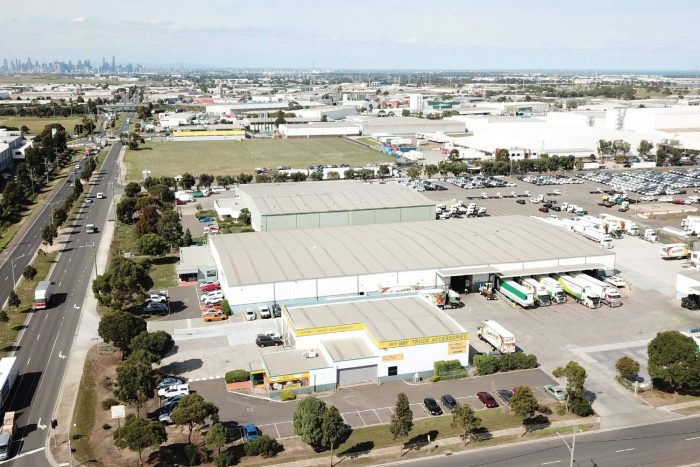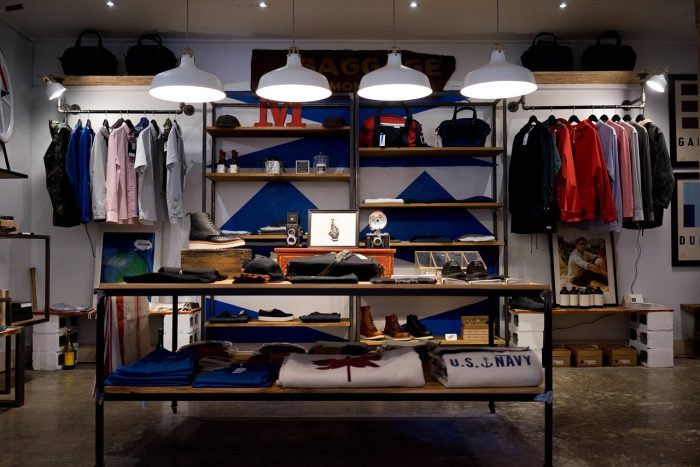What commercial property investors are doing in 2021
Published
January 20, 2020
Published
January 20, 2020

Where were you last year? Sitting on the sidelines? Funds kept in the bank, wrapped in cotton wool? Or were you getting amongst the action in active commercial property markets? If you’re a commercial property investor, chances are you either prospered during the coronavirus or watched others do so. Either way, in 2021 there’ll be plenty of opportunity for commercial real estate investors to enjoy substantial returns on high-quality commercial assets. Because commercial property, according to the AFR, is one of the go-to investments of 2021.
After a helluva year in 2020, here’s what commercial property investors will be considering in 2021:
Actually participating in the market
Many investors sat on the sidelines in 2020, and for good reason some would say. COVID-19 created uncertainty. And uncertainty is like seeing creek water when you’re thirsty… People only drink when they see someone else doing it first.
Investors who stayed active during 2020’s year of the virus snapped up high quality unlisted property at fantastic prices. Rent rolled in without delay from certain business and government tenants, like those which provided an essential service to the local precinct. Logistics companies, grocery stores, even government arms like Centrelink were all a part of this list of safe, secure and prosperous commercial occupants.
So, those who dipped their toe into commercial property investment in 2020 with these sorts of tenants – well, those with the knowledge of how to find a fundamentally sound asset and apply a fail-safe acquisition strategy – were rewarded. These investors had little competition from other players and plenty of negotiating power from those vendors trying to offload assets.
Now, 2021 is a new year. And while there’s still a long way for COVID-19 to leave our shores for good, investors will see the prosperity many investors achieved in 2020 and will want a piece of the action.
Enjoying record-breaking logistics activity
 Ecommerce is delivering record-breaking growth once again. 2021 is shaping up to be the best year yet for Australia online retailers and that – as we’ve seen before – has a direct flow-on effect to industrial property. Specifically, logistics premises.
Ecommerce is delivering record-breaking growth once again. 2021 is shaping up to be the best year yet for Australia online retailers and that – as we’ve seen before – has a direct flow-on effect to industrial property. Specifically, logistics premises.
According to Colliers International, for every one billion dollars spent online, about 85,000 sqm of industrial space is required. And as the AFR reports, online sales in Australia are expected to grow $18.5 billion in 2021. We’ll save you the math.
If both Colliers and the AFR are reporting correctly, that’s approximately one million sqm of industrial space required to meet leasing demand in 2021.
Investors will not be short of active logistics tenants in their industrial property investments if they participate (or continue to hold) premium industrial premises in 2021.
Finding essential services tenants

Centrelink is held in our Pathway Twelve Unit Trust investment opportunity. The premises had lines around the corner during the first signs of the COVID-19 pandemic.
There’s a new term in commercial real estate circles – ‘essential services’. We’re talking supermarkets, logistics companies, healthcare providers. These tenants didn’t just keep their heads above water during the pandemic. They made waves.
The grocery store phenomenon came about when Woolworths, Coles, and the local independent fruit and veg shop seemed the only commercial operators in Australia that were legally allowed to stay open. When it seemed like the only products Australians wanted were sold by supermarkets (i.e. toilet paper and flour), commercial landlords licked their lips imagining these outlets in their retail property portfolios.
The phenomenon then spread to government tenants. Centrelink, Medicare, and other public servant offices had lines around the corner for weeks at a time.
The trend then extended to those properties with medical occupants, doctor’s offices, medical equipment providers, and healthcare.
These sub-sectors will remain targets for investors with enough foresight to think that the coronavirus pandemic may not be our last.
For those investors asking, “What did I miss last year?” then investing in property occupied by essential services is up there.
Considering climate change
 Whether you huff at the term or regularly join rallies to support the environment, climate change is impacting commercial real estate investment in a big way. NABERS (which stands for the National Australian Built Environment Rating System) has long been the industry benchmark to regulate the environmental impact of particular commercial premises.
Whether you huff at the term or regularly join rallies to support the environment, climate change is impacting commercial real estate investment in a big way. NABERS (which stands for the National Australian Built Environment Rating System) has long been the industry benchmark to regulate the environmental impact of particular commercial premises.
If you haven’t heard of it before, NABERS is a rating system that provides a rating from one to six stars for buildings efficiency across:
- Energy
- Water
- Waste and
- Indoor environment
The rating helps landlords and tenants understand their building’s performance versus other similar buildings, providing a benchmark for progress. And it will be more prevalent than ever as governments around the world (including our own) place the environment on the same pedestal as the economy, education, and healthcare. Commercial property investors should do the same.
Buying retail assets at bargain prices
 Many landlords will continue to divest from retail as 2021 sees record growth in the ecommerce sector. For many commercial property owners, A-REITs, and unlisted property trusts, it’s a risk to have these properties in their portfolio.
Many landlords will continue to divest from retail as 2021 sees record growth in the ecommerce sector. For many commercial property owners, A-REITs, and unlisted property trusts, it’s a risk to have these properties in their portfolio.
The trend, however, will go the other way too. Quickly offloaded retail assets will come on the market at hot prices. It’s just up to those who know how to manage and add value to retail assets to truly take advantage.
So, investors must be aware.
Those managers who are holding onto their retail assets are doing so because they understand what makes a retail asset work. Acquiring someone’s problem at a cheap price is not a good strategy unless you know what you’re doing. For example, be selective with which retail sub-sector you’re investing in.
Large Format Retail remains the sector’s golden goose.
These stores sell goods Australians either struggle to buy with the click of a mouse or will only purchase after seeing it in-store. In other words, they haven’t had the same fight against online retail as other bricks and mortar stores.
Investigating alternative assets
 Childcare, healthcare, data centres. They’re all fair game for commercial property investors in 2021. These sectors are less tied to the traditional sectors such as office property and are thus now a consideration for investors as a substitute for mainstream investment opportunities.
Childcare, healthcare, data centres. They’re all fair game for commercial property investors in 2021. These sectors are less tied to the traditional sectors such as office property and are thus now a consideration for investors as a substitute for mainstream investment opportunities.
A JLL report on the 2021 investment themes across both Australian and New Zealand property markets backs the new trend toward alternative asset classes:
“The resilience of most real estate alternatives sub-sectors was highlighted by high rent collection rates throughout COVID-19 and it has expanded the pool of investors seeking exposure to those sub-sectors,” the report says.
Whatever strategy you adopt in 2021, ensure you keep property fundamentals in mind. Seek out premises with high quality tenants (preferably national or international operators) which boast proven track records. Look for value-add propositions as long as you know how to add that value. And conduct a thorough due diligence and the results from the investigation meet a set of critical investment criteria.






